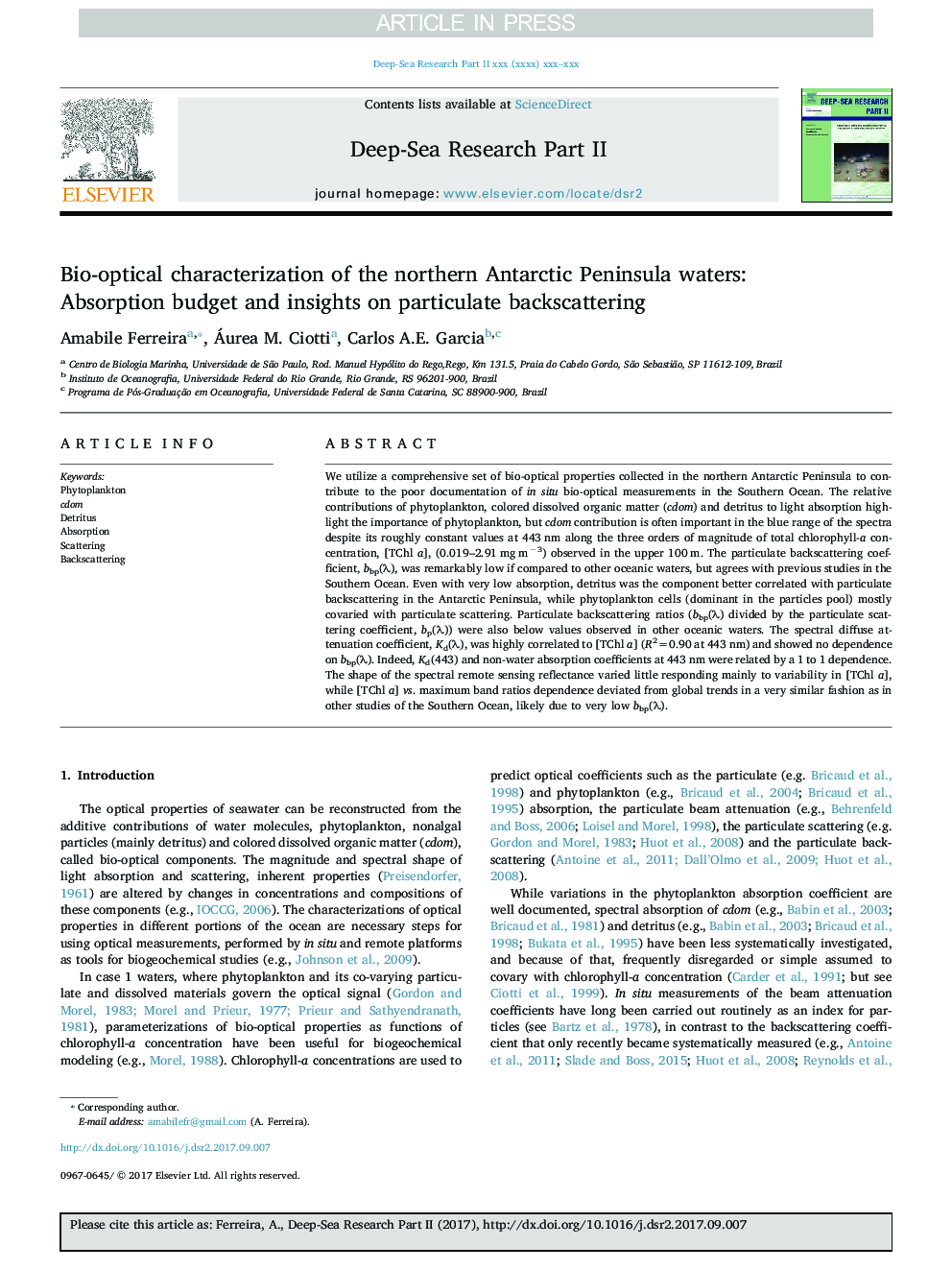| Article ID | Journal | Published Year | Pages | File Type |
|---|---|---|---|---|
| 8884413 | Deep Sea Research Part II: Topical Studies in Oceanography | 2018 | 12 Pages |
Abstract
We utilize a comprehensive set of bio-optical properties collected in the northern Antarctic Peninsula to contribute to the poor documentation of in situ bio-optical measurements in the Southern Ocean. The relative contributions of phytoplankton, colored dissolved organic matter (cdom) and detritus to light absorption highlight the importance of phytoplankton, but cdom contribution is often important in the blue range of the spectra despite its roughly constant values at 443 nm along the three orders of magnitude of total chlorophyll-a concentration, [TChl a], (0.019-2.91 mg mâ3) observed in the upper 100 m. The particulate backscattering coefficient, bbp(λ), was remarkably low if compared to other oceanic waters, but agrees with previous studies in the Southern Ocean. Even with very low absorption, detritus was the component better correlated with particulate backscattering in the Antarctic Peninsula, while phytoplankton cells (dominant in the particles pool) mostly covaried with particulate scattering. Particulate backscattering ratios (bbp(λ) divided by the particulate scattering coefficient, bp(λ)) were also below values observed in other oceanic waters. The spectral diffuse attenuation coefficient, Kd(λ), was highly correlated to [TChl a] (R2=0.90 at 443 nm) and showed no dependence on bbp(λ). Indeed, Kd(443) and non-water absorption coefficients at 443 nm were related by a 1 to 1 dependence. The shape of the spectral remote sensing reflectance varied little responding mainly to variability in [TChl a], while [TChl a] vs. maximum band ratios dependence deviated from global trends in a very similar fashion as in other studies of the Southern Ocean, likely due to very low bbp(λ).
Related Topics
Physical Sciences and Engineering
Earth and Planetary Sciences
Geology
Authors
Amabile Ferreira, Áurea M. Ciotti, Carlos A.E. Garcia,
